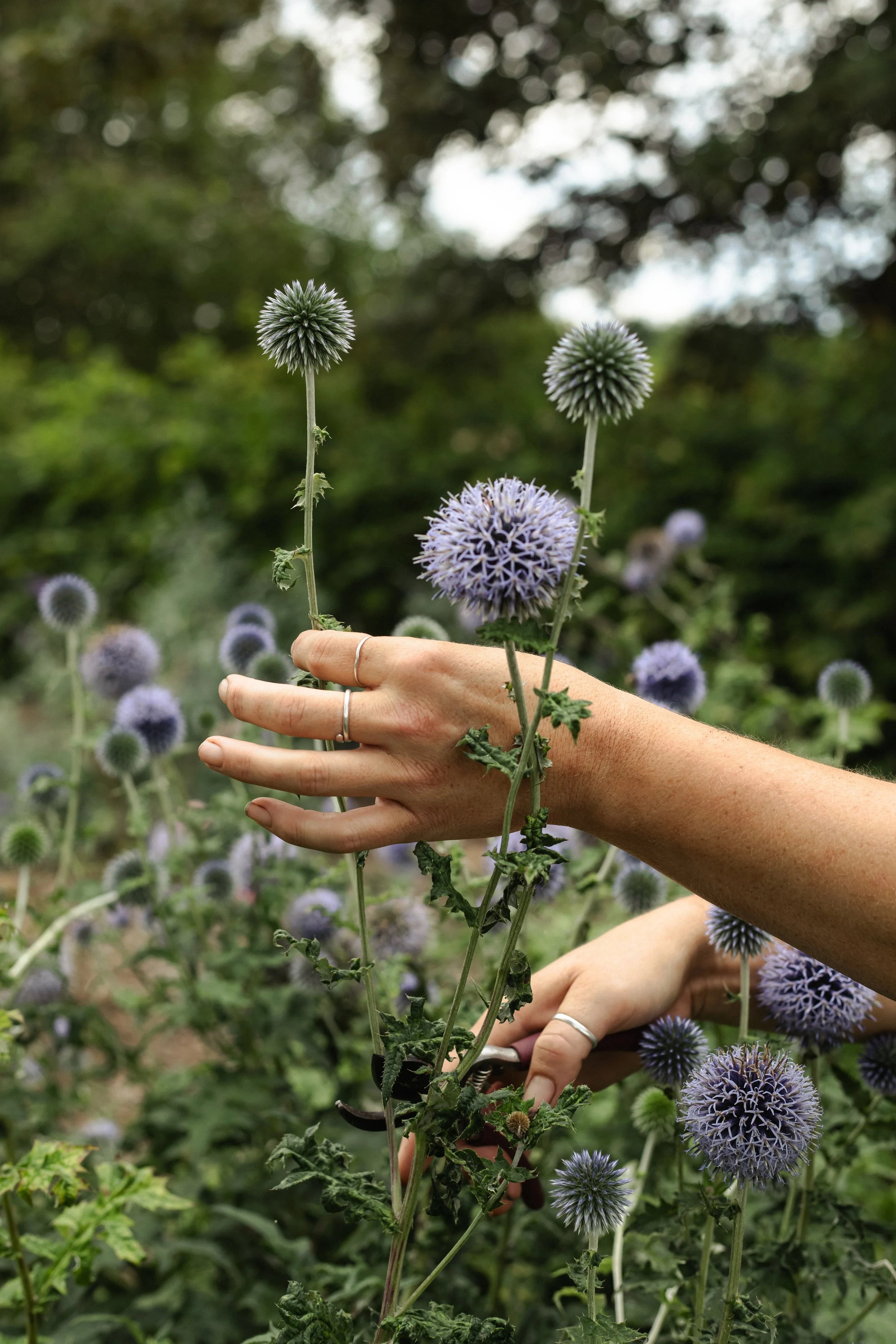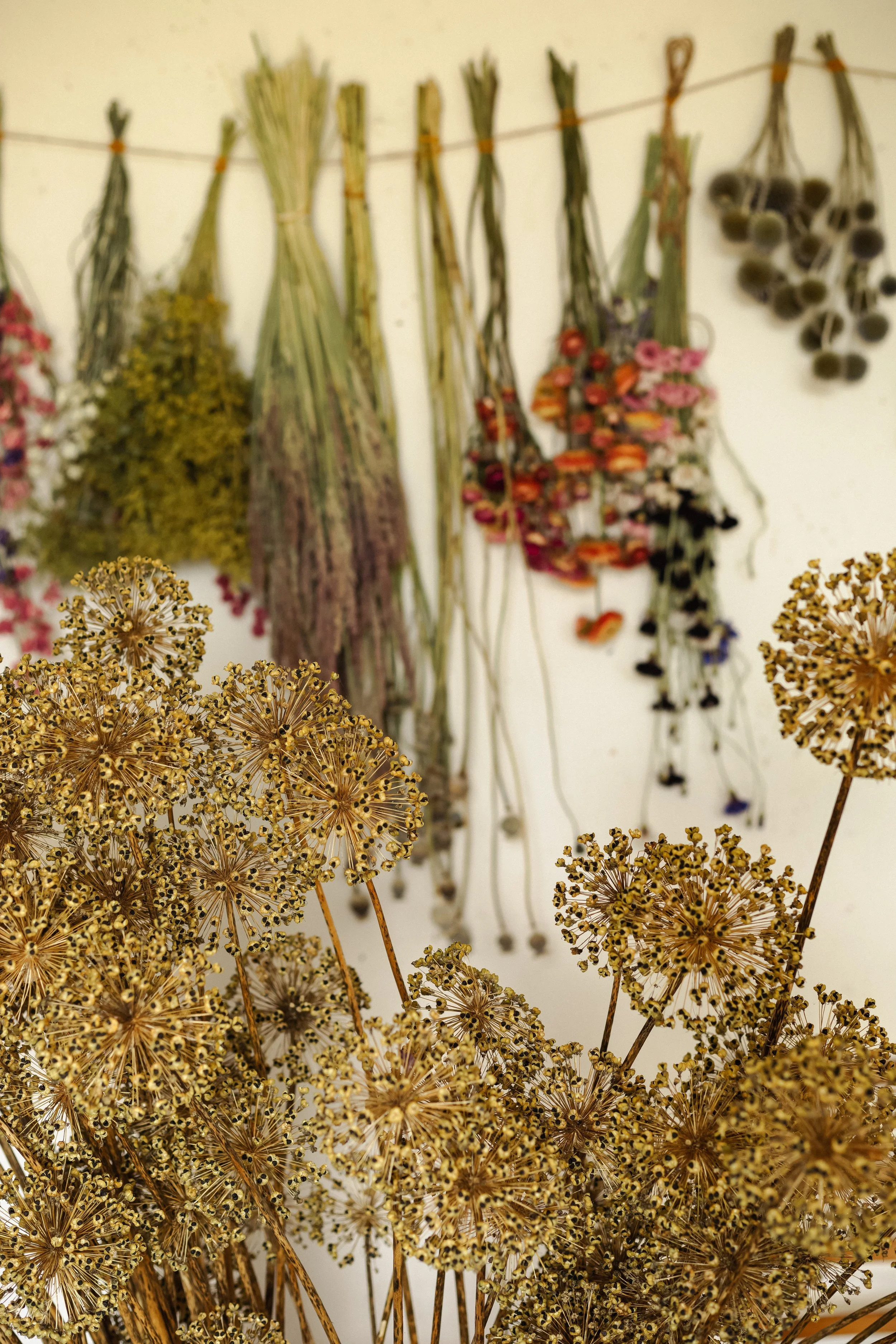Drying Flowers for the Festive Season
The festive season still feels far away - we are only in August after all. However, here at Thyme, preparations are well underway... not least the plans for a vibrant December, full of food, music and some winter wellness. The gardens team has also begun their Christmas prep.
Our Senior Gardener and cut flower grower, Vic, and House Florist Sophie, have been busy designing schemes and picking blooms for our festive floral decorations.
Dried flowers will feature heavily this year, bringing the outside in, and utilising the beautiful flowers, foliage and grasses that are abundant in our summer months.
We have sat down with Vic and Sophie to harvest their top tips for picking and drying your own flowers.
timing is everything
Picking the flowers at the right time is key in flower drying. Ideally, pick when the flowers are looking their best. Some flowers such as helichrysum bracteatum (more commonly known as straw flowers), need picking slightly earlier than full bloom, while others like hydrangeas need to be slightly turning, stems going woody and petals starting to lime for optimum drying. We started the picking and drying process in June, but this can extend until September. Some autumn blooming flowers can be picked and dried ready for winter.
perfect drying conditions
Here at Thyme, we are lucky to have the perfect sanctuary for flower drying. It must be a dark, dry, cool environment. Sunlight will bleach the flowers while the damp will rot them. Too warm, they will dry out too quickly and become brittle (although it’s better than rotting). So it’s a fine balance.
This season, we have tied small bunches together and hung upside down, allowing for air flow. Flowers that like this method are the helichrysum, celosia, echinops, achillea, cornflowers, and nigella. For larger flowers such as hydrangeas, use the evaporation method, where you leave the stems in a few inches of water (no need to top up), and slowly dry them out over a few weeks.
In addition to this, we forage wild flowers and foliage such as poppy seed heads, allium seed heads, grasses, teasles, old man’s beard and daucus carota. These are dry by autumn, and best picked on a dry day, when they will be browned and bleached naturally. They can even be placed and used straight away in situ if you wish.
the drying process
The whole drying process can vary, some might take as little as 3-4 weeks and fleshier plants like helichrysum can take up to 5 weeks. Foliage can take as long as it takes… it’s dry when it’s stiff. The key for Christmas is to give everything plenty of time to dry out. The beauty of dried flowers is that, treated with care, kept dry and out of sunlight, they will last for over a year. They are fragile and more delicate when dry, but have a lovely natural texture and quality to them.
This winter we plan to use the dried flowers and foliage for indoor displays in vases, potential hanging displays and indoor wreaths in the Ox Barn and Piggery. Even the bases of our dried flower wreaths will be made of grape vines from a local vineyard, dried out this autumn, ready for adding florals in winter.
For the woodier plants - foraged wild twigs, grasses and woody herbs (thyme, rosemary), we hope to make some wild wreaths that will withstand the rainy weather and adorn the outside doors.
We will mix this all in with live Christmas trees and foraged green displays, using full luscious fur, holly and rose hips whilst being careful not to mix dried with fresh.




